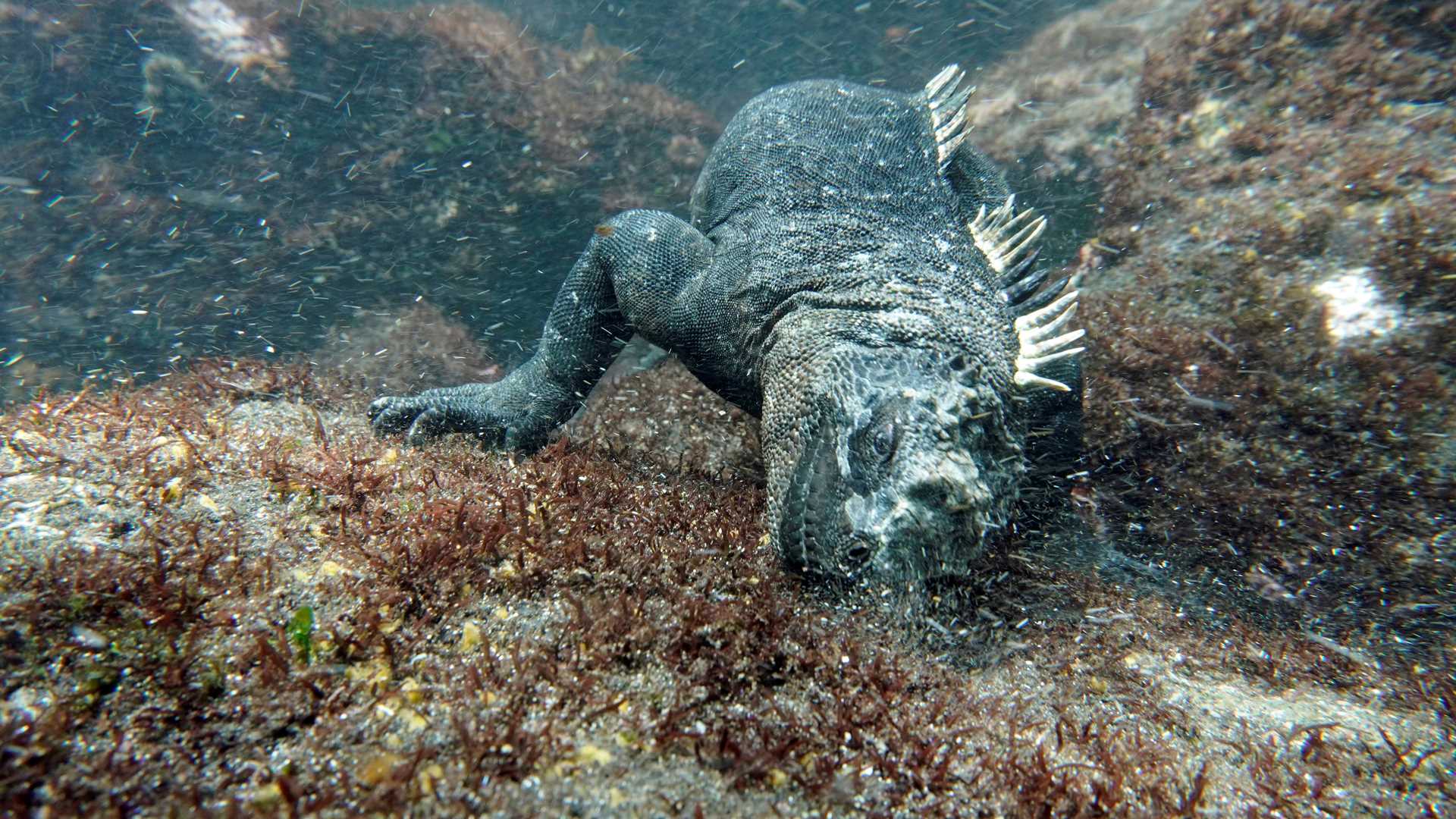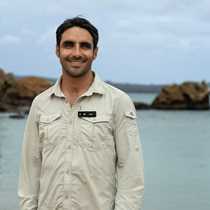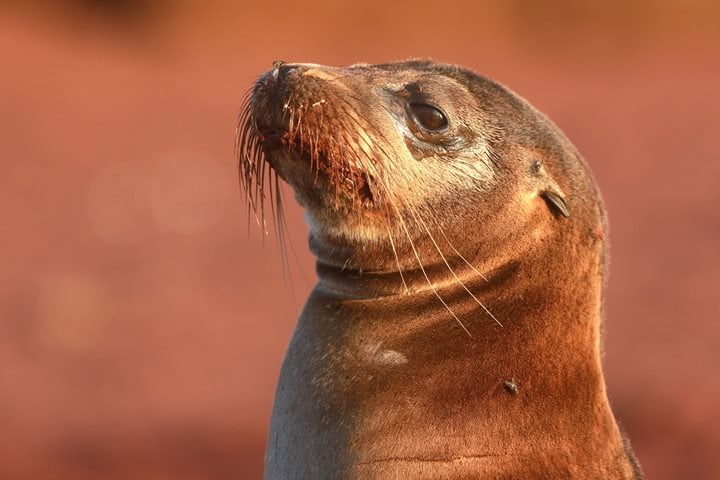Today we woke up in the western realm of the Galapagos Islands. We rose with the sun in search of cetaceans and after breakfast, we had the exciting moment of crossing the equator! Our morning adventure started in the ocean with a breathtaking Zodiac ride along one of the five volcanoes that forms Isabela Island. We had wildlife encounters with the famous Galapagos penguin, the only flightless cormorant in the world, and many playful sea lions. We took the adventure closer to the water and went for a snorkeling session with sea turtles, marine iguanas feeding on seaweed, more penguins and sea lions!
Our afternoon adventure took place at the youngest island of this enchanted archipelago, Fernandina Island. This island is home to thousands of marine iguanas that congregate on the black lava fields to warm up after long feeding sessions in the cold nutrient-rich waters of the Galapagos. Today was another magical day in paradise!









